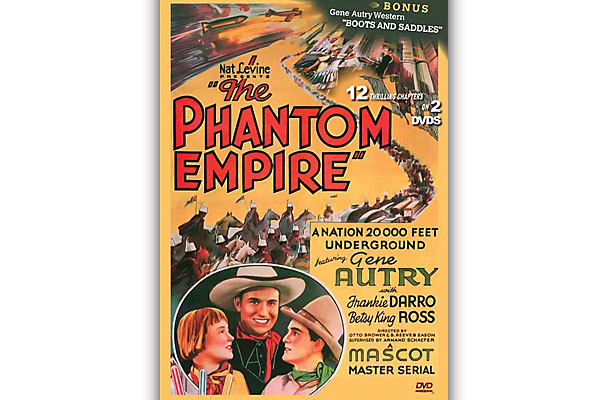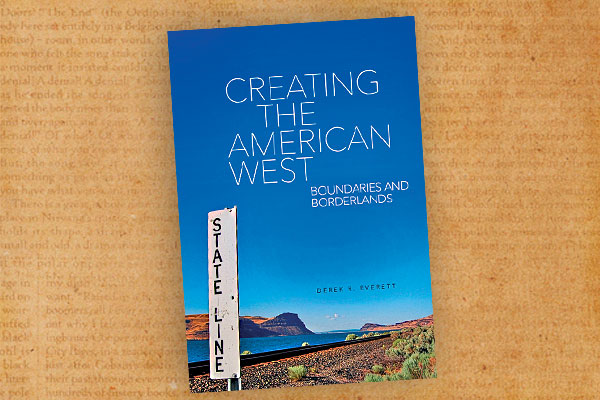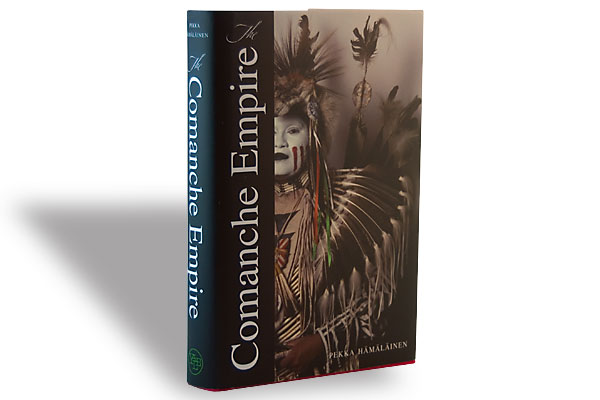
Gene Autry wasn’t completely green when he starred in the 12-chapter serial The Phantom Empire in 1935. He’d made a musical appearance in 1934’s In Old Santa Fe, a Ken Maynard Western for Nat Levine’s Mascot Pictures, and had a small, uncredited part in another Maynard serial, but when Levine removed Maynard and cast Autry in his new chapter play, it marked the true beginning of Gene Autry’s movie career.
Autry was pretty awful as an actor at that point, and he acted in a number of pictures before he grew comfortable in front of the camera. But even if he had never moved beyond this serial, it would still be worthy of note as one of the great trans-genre oddities of screen history, mashing Westerns, singing cowboys and science fiction into a single story. Many say the film was at least 20 years ahead of its time, and it certainly inspired the Flash Gordon serials that followed, but for the most part, The Phantom Empire is a one-time-only piece of work.
The story is fairly convoluted, but it involves vast stores of buried radium, the villainous scientists who covet it and their hired minions, a daily radio broadcast from the ranch by Gene and his musical cohorts, an entire gang of teen sidekicks, the Junior Thunder Riders, led by Frankie Darro and Betsy King Ross, and the vast subterranean empire of Murania (inspired by the lost continent of Mu), which rested in all its shiny cathode-ray splendor five miles beneath the earth’s surface.
Queen Tika was the haughty ruler of Murania, determined to keep the vile surface world from infecting her nation, which makes some sense since the Muranians already had TV, rayguns, metal helmets, rocket ships, robot workers who did all the heavy lifting and elevators which shot them up to Griffith Park in Los Angeles, where the serial was filmed. That Murania and its people are all killed at the end is a lot sadder than anyone in the movie seems to acknowledge. If the place hadn’t suffered a literal meltdown, a couple of decades later Autry could have bought it and turned it into an amusement park.
The Phantom Empire has re-appeared over the decades in various versions, and the Autry estate offers restored chapters in its fine series of DVDs, but this new edition not only presents the entire serial in good condition on two discs, it includes some bonus material and the complete Autry film Boots and Saddles (1937), which is one of his better early pictures.






